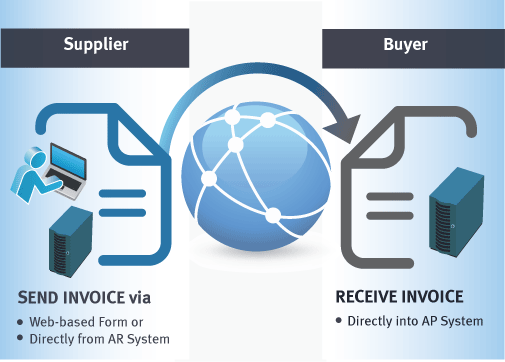What is e-Invoicing?
Electronic invoicing (e-Invoicing) is the exchange of the invoice document between a supplier and a buyer in an integrated electronic format. Traditionally, invoicing, like any heavily paper-based process, is manually intensive and is prone to human error resulting in increased costs and processing lifecycles for companies.
e-Invoicing is a common B2B practise and has been part of Electronic Data Interchange transactions for many years. The issue of compliance seems to have seperated e-Invoicing from B2B. Perhaps surprisingly many Finance leaders are unaware that their company is already sending/receiving EDI electronic invoices.

The true definition of an electronic invoice is that it should contain data from the supplier in a format that can be entered (integrated) into the buyer’s Account Payable (AP) system without requiring any data input from the buyer’s AP administrator.
As this allows for a number of formats to be employed, it is useful to apply the following guidelines:
An e-Invoice
- Structured invoice data issued in Electronic Data Interchange (EDI) or XML formats
- Structured invoice data issued using standard Internet-based web forms
Not a true e-Invoice
- Unstructured invoice data issued in PDF or Word formats
- Paper invoices sent via fax machines
- Scanned paper invoices
Although significant cost and time savings can be achieved by removing paper and manual processing from your invoicing, the real benefits of eInvoicing come with the level of integration between you and your trading partners and between your invoicing software and other business systems.
Need any help?
One of our eInvoicing experts would be happy to answer any questions you have. Simply ask an eInvoicing expert »
